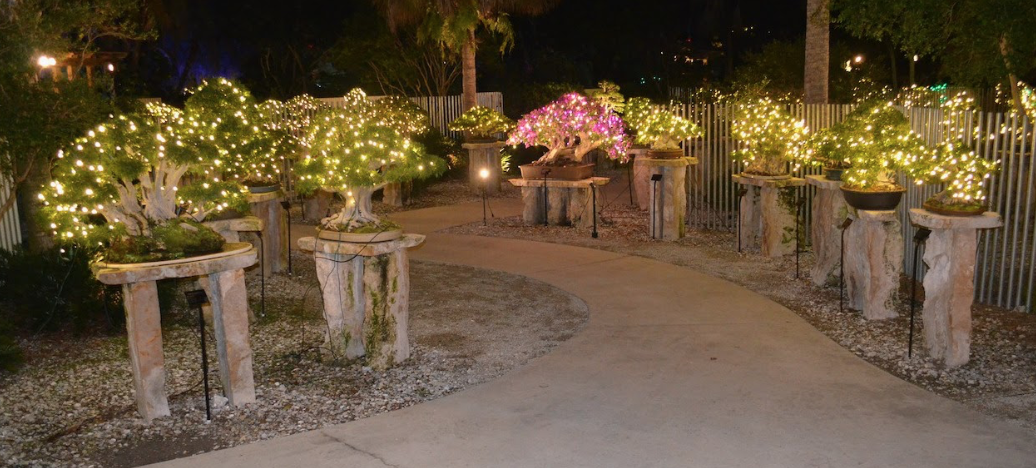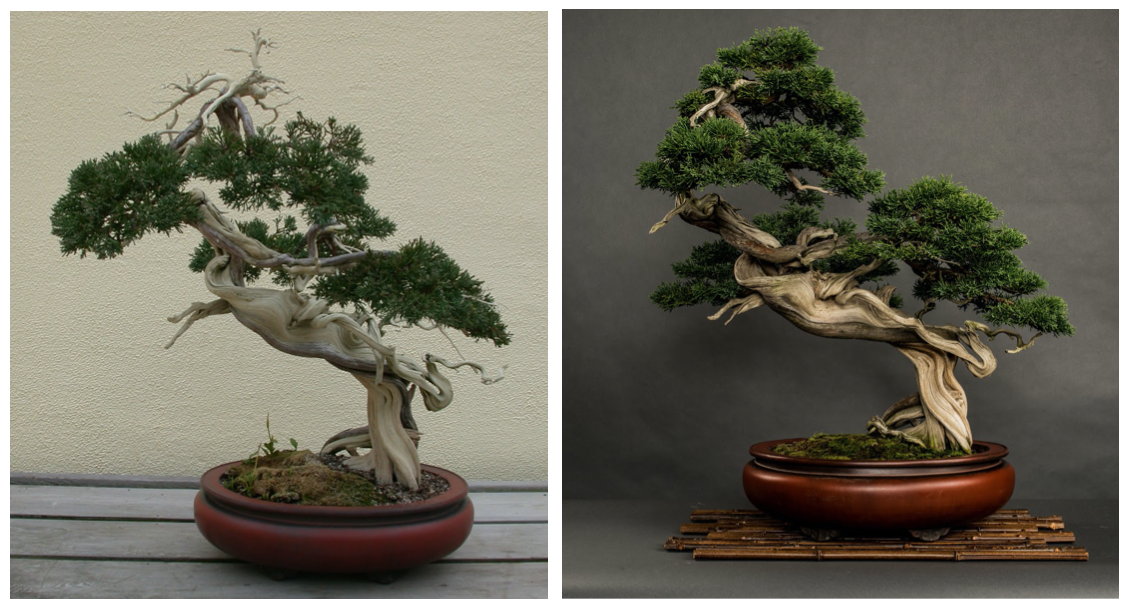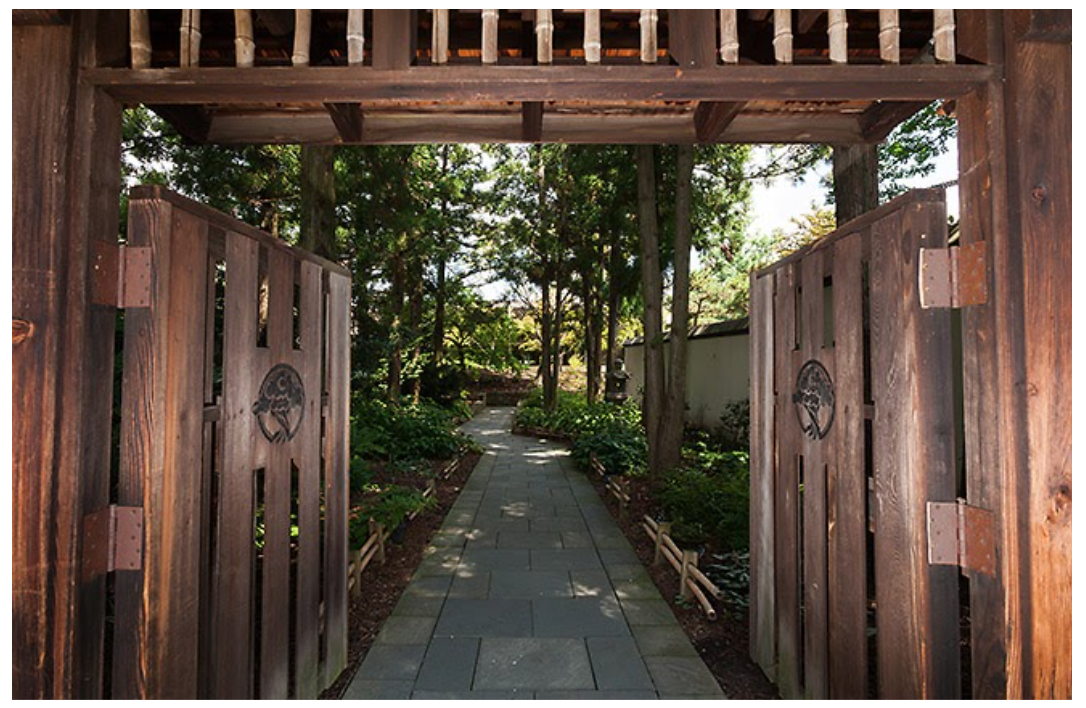The entrance to the James J. Smith Bonsai Gallery at Heathcote Botanical Gardens in Florida. The architect-designed theme is “Asia meets Florida Cracker,” Kehoe said. Photo credit: @heathcotebg on Instagram.
The world of bonsai is fortunate to encounter so many legendary artists, many of whom are immortalized in displays, buildings or collections at bonsai museums and gardens. For this installation of Bonsai Around the World, we highlight the bonsai collection of an eminent and accomplished icon in the Floridian bonsai community: James Smith.
We spoke with Tom Kehoe, a close friend and student of the late bonsai master who is now the curator of the James J. Smith Bonsai Collection at Heathcote Botanical Gardens in Fort Pierce, Florida.
Kehoe was drawn to martial arts classes at an early age, which blossomed into an interest in Asian languages, history and art. After receiving a book about bonsai at 16 years old, Kehoe tried to start training bonsai, but he wasn’t very successful in keeping his trees alive. Fifteen years later, a knowledgeable bonsai stylist gave him some tips for bonsai care and, after a few months of successfully raising a few bonsai, Kehoe sought out a bonsai master named Jim Smith for a more expert point of view.
Tom Kehoe, the curator at the bonsai gallery. Photos courtesy of Tom Kehoe.
Kehoe and his wife began attending Smith’s free monthly lessons, forging a 20-year friendship. Kehoe eventually began assisting Smith with his nursery, helping to run bonsai seminars and eventually taking over the care of Smith’s private tree collection as Smith’s health began to falter.
“Jim must have had five or six thousand little trees,” Kehoe said. “He had tables and tables of little trees that could grow up to be bonsai.”
To ensure his private collection of bonsai would remain in loving and skilled hands, Smith decided to donate his 100 trees to Heathcote Botanical Gardens, to whom he had previously gifted a few trees. Heathcote leveled off an area of their grounds, designed a display section and constructed a pavilion for the incoming collection. Meanwhile, Kehoe and Smith spent about two and a half years preparing Smith’s bonsai for transfer to their new home.
“We’d take trees out of the pots, trim the roots way back, reshape the canopy and put them back into the pots,” Kehoe said. “I’d even take one or two home with me, work on them and bring them back the next week. I developed a personal relationship with those trees.”
When the trees first arrived at the Heathcote gardens, Kehoe’s full-time job precluded him from working with the collection. But years later, after Heathcote staff asked him and his wife to work on the trees in preparation for a fundraiser at the gardens, he accepted the curator position.
“I now commute down there a few times a week, but we have a whole cadre of volunteers that help us out,” Kehoe said.
A popular attraction at the gallery, a bougainvillea. Its pot is 4 feet long, and the tree can only be moved by forklift!
Getting to know the collection and its owner
Heathcote Botanical Gardens consists of six separate gardens, including areas like the bonsai gallery, a rainforest garden and even a children’s garden. Once a month, staff will host events during which they’ll work on visitors’ bonsai or advise them on how to train and style your tree.
The James J. Smith Bonsai Gallery features about 110 trees of 35 species, almost all of which are tropical and subtropicals and continuously displayed. Their oldest tree is thought to be about 200 years old, a buttonwood with a massive driftwood trunk collected from the Florida Keys that has been in training since 2004.
Kehoe said many of the bonsai are several feet tall and require six people or more to move them. He said Smith, a bonsai master and the collection’s namesake, is remembered as the “grandfather” of bonsai in Florida, which is home to myriad bonsai displays, nurseries and societies – including a state organization.
Heathcote hosts a “Garden of Lights” event each year, bringing in 10,000 people to the bonsai gallery in a matter of weeks.
Kehoe said one of the collection’s most notable and prettiest trees is a twin trunk Jaboticaba John Naka styled in the 1970s. The gallery also houses a saikei, or “living landscape,” that bonsai master Yuji Yoshimura arranged in the 1970s.
Smith is credited with bringing a number of species onto the bonsai scene, particularly Portulacaria Afra – a steadily growing succulent that plays a vital role in the South African ecosystem and is one of the most effective plants in climate mitigation processes. Smith’s first bonsai was a Portulacaria that has been in a pot since 1957.
Another atypical bonsai is an informal upright Bo tree, or Ficus religiosa, the storied species credited with starting the Buddha on his path to enlightenment. The Bo tree’s large heart-shaped leaves are said to represent the great heart of the Buddha.
“Jim would always find unusual species, like bo trees or baobabs, and see how to work with them to make bonsai,” Kehoe said.
The late James Smith working on a 5-foot, formal upright Portulacaria Afra – the logo tree for the gallery.
Heathcote staff have to store their Baobab in a dark closet without water for part of the year to simulate its natural drought-ridden growth environment in Africa. The gallery also features a gumbo limbo tree, native to South Florida and the Caribbean. Their distinctive thin and shaggy bark is likened to the appearance of skin peeling away.
“The local nickname for the gumbo limbo is ‘tourist tree’ because, like the tourists, it’s red and peeling!” Kehoe joked.
You can find more information about the Heathcote and the James J. Smith Bonsai Gallery here. Have you been? Share your pictures and stories with us: Facebook, Instagram, Twitter.
This magnificent Ficus exotica is 4 feet wide, has been in training since 1972 and was displayed at Epcot’s Flower and Garden Show in 2019.
















